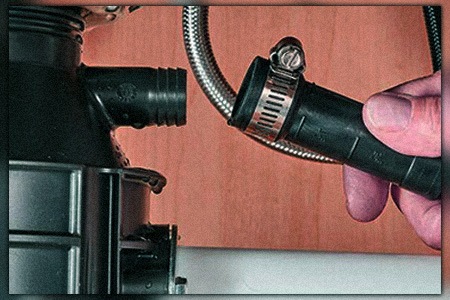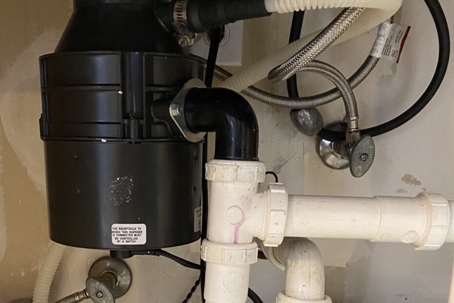Have you been hunting for information concerning How to fix a pretty consistent leak from my garbage disposal?

Garbage disposals are crucial cooking area home appliances that help in disposing of food waste efficiently. Nonetheless, a dripping waste disposal unit can be a discouraging and messy problem to handle. The good news is, lots of leakages can be repaired easily with a few simple actions. In this write-up, we will go over just how to take care of a dripping garbage disposal efficiently.
Introduction
Garbage disposals are installed under cooking area sinks and are made to shred food waste into smaller items, permitting it to pass through the pipes system quickly. While these gadgets are usually reliable, leaks can happen with time because of damage, loosened links, or damages to the device.
Typical Causes of Leaks in Garbage Disposals
Worn Seals and Gaskets
Seals and gaskets play a critical function in avoiding water from dripping out of the waste disposal unit. With time, these elements can degrade, causing leaks around the disposal unit.
Loose Connections
The links between the waste disposal unit and the pipes system can end up being loosened gradually, triggering water to leak out throughout operation.
Splits or Openings in the Disposal Device
Physical damages to the garbage disposal, such as cracks or openings in the housing, can additionally result in leakages.
Recognizing the Resource of the Leak
Prior to trying to deal with a dripping garbage disposal, it is vital to identify the resource of the leakage. This can typically be done through aesthetic examination or by carrying out simple tests.
Visual Evaluation
Check the garbage disposal system very carefully for any indicators of water leak. Pay very close attention to areas around seals, gaskets, and connection factors.
Testing for Leakages
One way to evaluate for leaks is by running water via the disposal device and checking for any type of noticeable indications of leak.
Devices and Materials Needed for Repairing a Dripping Garbage Disposal
Prior to starting the repair work procedure, gather the required devices and materials, including a screwdriver, flexible wrench, plumbing professional's putty, replacement seals or gaskets, and epoxy or patching product for fixing splits or holes.
Step-by-Step Guide to Repairing a Dripping Waste Disposal Unit
Shut off the Power
Before trying any repair services, ensure that the power to the waste disposal unit system is switched off to avoid the danger of electrical shock.
Find the Leakage
Recognize the specific location of the leak and determine the cause.
Tighten Links
Make use of a wrench to tighten any loose connections in between the disposal system and the pipes system.
Replace Seals or Gaskets
If the leak is due to worn seals or gaskets, remove the old components and change them with new ones.
Patching Cracks or Openings
For cracks or holes in the disposal unit, use epoxy or an ideal patching material to secure the damaged location.
Examining the Garbage Disposal After Fixing
Once the fixing is full, check the garbage disposal by running water with it to ensure that the leakage has actually been settled.
Preventive Upkeep Tips to Prevent Future Leaks
To prevent future leakages, it is important to do regular upkeep on your waste disposal unit. This consists of maintaining it tidy, preventing putting non-food items or difficult objects down the disposal, and periodically checking for leaks or various other issues.
Conclusion
In conclusion, fixing a leaking waste disposal unit is a fairly uncomplicated procedure that can be finished with basic tools and materials. By adhering to the actions detailed in this write-up and practicing precautionary maintenance, you can maintain your waste disposal unit in good working condition and stay clear of expensive repair services in the future.
What to Do About a Leaking Garbage Disposal
A leaking garbage disposal often goes unnoticed until you confront a sopping cabinet, a foul-smelling puddle, or an audible drip-drip-drip from the unit. The fix can be frustrating, too, because the leak can stem from a number of components in the system. Fortunately, with a little sleuthing, you can zero in on the leak and—depending on the exact location—stop the icky oozing and repair the component that caused it. Worst case scenario, if it turns out that the garbage disposal must be replaced, installing a new one is a reasonable do-it-yourself task for those with basic plumbing skills. Read on to keep the cash you’d otherwise hand over to a pro.
Prepare to find the leak
Prior to testing the garbage disposal for leaks, unplug it at the wall outlet and turn off the power from the breaker box to prevent electrical shock. Then insert a watertight sink stopper into your sink drain and wipe the unit dry with a clean cloth. In any handy container, mix a few drops of food coloring into a few cups of water, and pour the dyed water onto the sink stopper to help you locate the leak.
Investigate the source
the top, where the disposal meets the sink drain the side, where the dishwasher hose or main drain pipe connects to the disposal or the bottom of the unit Inspect each of these locations while gliding a light-colored rag over the unit; the dyed water will readily show on the rag and reveal the location of the leak. If a leak isn’t immediately apparent, remove the sink stopper and pour a few more cups of dyed water down the sink drain, then check for leaks again. Leaks near the top of the unit are more likely to show themselves while the sink is plugged, while side and bottom leaks are more noticeable while the sink is unplugged.
The metal sink flange that sits directly inside the sink drain is typically sealed around the top with plumber’s putty (a clay-like sealant) and then secured from under the sink with bolts. If the plumber’s putty deteriorates, or the bolts loosen, the flange can no longer form a watertight seal between the sink drain and the disposal—which could cause a leak at the top of the unit.
To reseal the leaky flange, you must first detach the garbage disposal. Start by loosening the screws securing the main drain pipe to the disposal, then loosen the screws in the metal clamp securing the dishwasher hose to the disposal and detach the drain pipe and dishwasher hose from the disposal. Loosen the screws in the mounting ring that connects the disposal to the metal mounting assembly beneath the sink, then pull down the disposal and carefully set it on a clean, dry surface. Loosen the bolts in the mounting assembly with a wrench, then pull down the mounting assembly and set it near the disposal.

As a keen person who reads about Garbage Disposal Leaking From Bottom, I think sharing that excerpt was a good idea. Are you aware of anybody else who is involved in the niche? Take a moment to share it. Thanks for your time invested reading it.
Contact Us